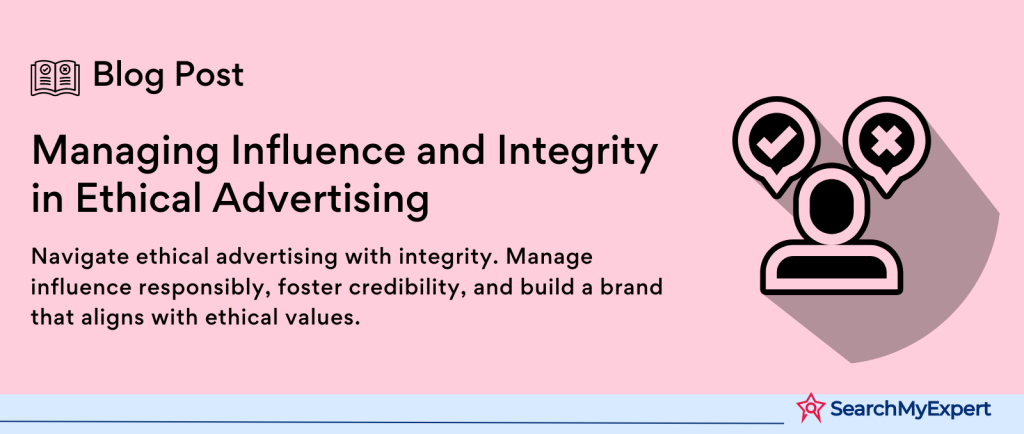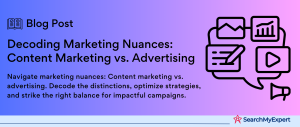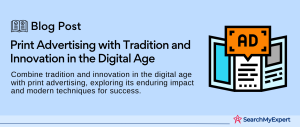Advertising: The Power and Responsibility
The Omnipresence of Advertising
Advertising is like the air we breathe – always there, yet often unnoticed. It’s a relentless companion in our daily lives, from billboards that greet us on our morning commute to the targeted ads that pop up on our smartphones. Advertising has evolved from mere announcements to sophisticated psychological triggers, shaping not just our purchases, but our perceptions and behaviors.
Impact on Perceptions and Behavior
Consider this: why do we prefer one brand over another? Often, it’s not just about the product; it’s about the story told by its advertising. Advertisements are powerful storytellers, weaving narratives that resonate with our deepest desires and fears. They influence not only what we buy but also how we see the world. For instance, a successful ad campaign can transform an ordinary item into a symbol of status or a representation of a lifestyle.
The Role of Consumer Choices
Our choices as consumers are constantly nudged and molded by advertising. It’s a subtle dance of persuasion, where the art of advertising plays on our emotions, desires, and even insecurities. The result? We often make choices that are less about need and more about the perceived value created by ads.
Introduction to Ethics in Advertising
Enter ethics, the moral compass guiding responsible advertising. It’s about fairness, honesty, and respect for the consumer. In an era where advertising has immense power to influence, ethical practices ensure that this power is used responsibly. Ethics in advertising is not just a moral obligation; it’s a cornerstone for trust and credibility in a brand.
The Importance of Ethical Advertising
Ethical advertising goes beyond legal compliance. It’s about fostering a culture of honesty and integrity. Ethical ads don’t manipulate; they inform and engage. They build relationships based on trust, not deception. In a world crowded with ads, ethical practices make a brand stand out for the right reasons.
Truthfulness and Transparency in Advertising
The Essence of Truthfulness
Truthfulness in advertising is foundational. It’s about being honest with the consumer – no false claims, no misleading information. The truth is not just a legal requirement; it’s a respect for the consumer’s right to accurate information. A truthful ad does not exaggerate; it presents the product or service as it is.
The Perils of Misinformation
Misinformation in advertising is a slippery slope. It can range from exaggerated claims to outright lies. The dangers are twofold: it erodes consumer trust and can lead to harmful decisions. For example, misleading health claims can have serious consequences for the unwary consumer.
Deceptive Visuals and Claims
The visual aspect of advertising is potent. A picture can tell a thousand lies. Deceptive visuals, like photoshopped images, can create unrealistic expectations. Similarly, misleading claims, often hidden in fine print, can obscure the truth. The result? A consumer misled is a consumer betrayed.
The Imperative of Transparency
Transparency is the antidote to deception. It’s about clarity – from clear labeling to straightforward communication about sponsorships and endorsements. In the age of influencer marketing, transparency is crucial. Consumers have the right to know if what they’re seeing is a genuine recommendation or a paid promotion.
Disclosure of Sponsorships and Influencer Marketing
In the era of social media, where influencers wield significant influence, the lines between personal opinion and paid endorsement can blur. Clear disclosure of sponsorships is not just an ethical practice but a legal requirement in many jurisdictions. It respects the consumer’s right to know the full context of the advertisement.
Navigating Potential Biases
Finally, navigating potential biases in advertising is essential for maintaining trust. Advertisers must be aware of and address any unconscious biases in their ads, ensuring inclusivity and respect for diversity. This not only reflects ethical responsibility but also resonates with a diverse consumer base.
Targeting and Manipulation in Advertising: A Fine Line
Ethical Concerns in Targeted Advertising
Imagine a world where every ad you see feels like it’s made just for you. That’s the power of targeted advertising. But with great power comes great responsibility. Targeted ads use data to pinpoint our preferences, but they can cross ethical lines, veering into manipulation.
The Power of Psychological Triggers
Advertising often taps into our deepest emotions – fear, joy, desire. These psychological triggers are potent. They can encourage positive behaviors, like healthy living, but can also exploit fears and insecurities. When does clever marketing become emotional manipulation? This is the ethical dilemma.
Fear Mongering and Vulnerabilities
Some ads don’t just sell products; they sell fear. Fear mongering in advertising can create anxiety and stress. Especially harmful are ads that target vulnerable groups, like those with health anxieties or financial insecurities. Ethical advertising should empower, not exploit vulnerabilities.
Responsible Targeting: User Preferences vs. Manipulation
Here’s the challenge: how to use targeting responsibly? The key is to respect user preferences without crossing into manipulation. Ads can be personalized but should not exploit our psychological weaknesses. They should be relevant, not invasive.
Avoiding Discriminatory Practices
Discrimination in targeting is a grave concern. Algorithms can unintentionally reinforce biases, targeting ads based on gender, race, or income in discriminatory ways. Ethical targeting means ensuring that algorithms are fair and inclusive, avoiding any form of discrimination.
Breaking Stereotypes: Responsible Representation in Advertising
The Impact of Stereotypes in Advertising
Stereotypes in advertising are not just lazy; they’re harmful. They reinforce outdated beliefs and biases. From the over-sexualized portrayal of women to racial stereotypes, these images shape societal views, often negatively.
Gender Roles and Advertising
Gender stereotypes in advertising contribute to harmful societal norms. Ads depicting women solely in domestic roles or men as the embodiment of toughness perpetuate restrictive gender roles. Responsible advertising should challenge these stereotypes, promoting gender equality.
Racial Prejudices and Cultural Appropriation
Racial prejudices in advertising are particularly insidious. They reinforce stereotypes and widen societal divides. Similarly, cultural appropriation in ads shows disrespect and ignorance towards the cultures being represented. Advertising needs to be culturally sensitive and respectful.
The Power of Inclusive Representation
Inclusive representation in advertising is not just about avoiding stereotypes; it’s about celebrating diversity. It’s about showing a range of ethnicities, body types, ages, and abilities. Inclusive ads reflect the real world and empower marginalized groups.
Empowering Marginalized Groups
Advertising has the power to empower. By portraying marginalized groups positively and authentically, ads can challenge societal norms and promote inclusivity. This isn’t just good ethics; it’s good business. A diverse audience wants to see themselves represented respectfully.
Ethical Advertising to Children and Vulnerable Audiences
The Unique Vulnerability of Children
Children are not just small adults; they are a unique audience with specific needs and vulnerabilities. Advertising aimed at children requires a heightened level of ethical consideration. Children are more impressionable and less able to discern the persuasive intent of ads. It’s crucial that advertisements targeting children are age-appropriate, truthful, and do not exploit their naivety.
Age-Appropriate Messaging
What does age-appropriate advertising look like? It’s not just about avoiding adult themes. It’s about tailoring messages that are suitable for children’s developmental stages. For younger children, ads should avoid complex concepts they can’t understand. For older children, messages should be responsible and not encourage unhealthy behaviors.
Avoiding Exploitation in Children’s Advertising
Children should be allowed to be children. Ads should not pressure them into growing up too fast or exploit their fantasies. Products like junk food, toys, or video games need to be advertised in a way that doesn’t exploit children’s natural impulsiveness or lack of judgment.
Protecting Children from Harmful Products
Some products should never be advertised to children. This includes not only obvious things like alcohol or tobacco but also products like high-sugar foods or unsafe toys. Regulations often govern this, but ethical responsibility goes beyond legal compliance. It’s about protecting children’s health and well-being.
Vulnerable Audiences Beyond Children
The ethical lens widens when we consider other vulnerable audiences. This includes the elderly, people with disabilities, and those facing social or economic disadvantages. Each group has specific vulnerabilities that ethical advertising must respect.
Advertising and the Elderly
Older adults can be particularly susceptible to certain types of advertising, especially those related to health products, financial services, and retirement planning. Ethical advertising to the elderly means avoiding fear tactics and ensuring that information is clear, accurate, and not misleading.
People with Disabilities
People with disabilities are often underrepresented or misrepresented in advertising. Ethical advertising should be inclusive, representing people with disabilities in a respectful and empowering way. It should also avoid exploiting their potential vulnerabilities, particularly in product categories related to health and accessibility.
Social and Economic Disadvantages
Advertising often overlooks the realities of those facing social or economic disadvantages. Ethical advertising means not exploiting their situations, not promoting luxury or high-cost products unattainable for this audience, and not reinforcing harmful stereotypes.
A Call for Responsible Advertising
Advertising to vulnerable audiences is not just a legal issue; it’s a moral one. It calls for responsibility, sensitivity, and a deep understanding of the impact that messages can have. Ethical advertising respects the dignity, diversity, and vulnerabilities of all audiences.
Regulation and Self-Governance in Ethical Advertising
The Interplay of Government Regulations and Industry Self-Governance
In the realm of advertising, two main forces work to maintain ethical standards: government regulations and industry self-governance. Government regulations are legal requirements that advertisers must follow – think of them as the guardrails of the industry. Industry self-governance, on the other hand, involves the advertising industry policing itself, setting standards and norms that often go beyond what the law requires.
The Role of Government Regulations
Government regulations in advertising are designed to protect consumers from misleading, harmful, or offensive content. These regulations vary by country but typically include restrictions on false advertising, protection for vulnerable groups, and guidelines for specific product categories like alcohol, tobacco, or pharmaceuticals.
Limitations of Legal Frameworks
While legal frameworks are essential, they have their limitations. Laws can be slow to adapt to new technologies and trends. For instance, digital and social media advertising present unique challenges that traditional advertising laws may not adequately address. This is where industry self-governance steps in.
The Importance of Ethical Codes in Advertising
Ethical codes in the advertising industry are like a moral compass. Organizations like the American Advertising Federation (AAF) and the International Advertising Association (IAA) develop codes of ethics that outline responsible practices. These codes often address issues like honesty, social responsibility, and respect for consumer privacy.
Beyond Compliance: Ethical Leadership in Advertising
Adhering to legal requirements is just the starting point. Ethical advertising requires a commitment to higher standards – it’s about doing the right thing, not just what’s legally required. This includes truthful representation of products, respect for consumer intelligence, and sensitivity to societal issues.
Encouraging Individual Responsibility
Every professional in the advertising industry holds the key to ethical practices. It’s about individual responsibility – from the copywriter penning the ad’s content to the executive approving the campaign. Ethical decision-making at every level ensures that the final advertisement meets high ethical standards.
Collective Responsibility and Accountability
The responsibility for ethical advertising extends beyond individuals; it’s a collective effort. This includes holding each other accountable – if an ad crosses ethical lines, it’s up to the industry to call it out and take corrective action. This collective responsibility fosters a culture of integrity and trust.
A Call for Ongoing Vigilance
The advertising landscape is ever-evolving, and so are its ethical challenges. Ongoing vigilance is required to ensure that ethical standards keep pace with new technologies, mediums, and consumer trends. This means continuous review and updating of ethical codes and practices.
Conclusion
The intersection of government regulations and industry self-governance is critical in upholding ethical standards in advertising. While legal frameworks provide the necessary boundaries, the commitment to ethical practices through self-governance ensures that advertising not only follows the law but also respects the spirit of fairness and honesty.
Forge a bold path in the market with our Advertising Firms.
Table of Contents
Toggle






